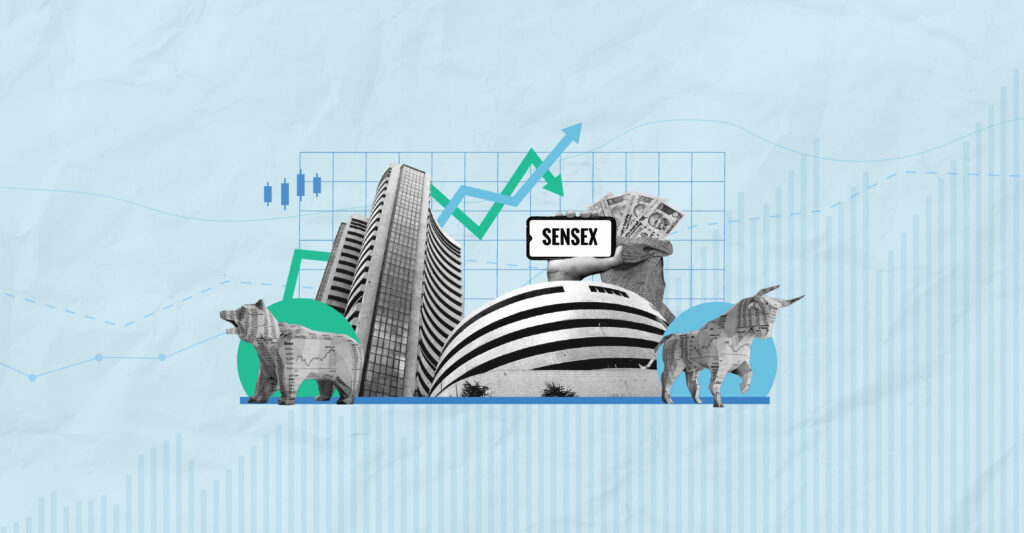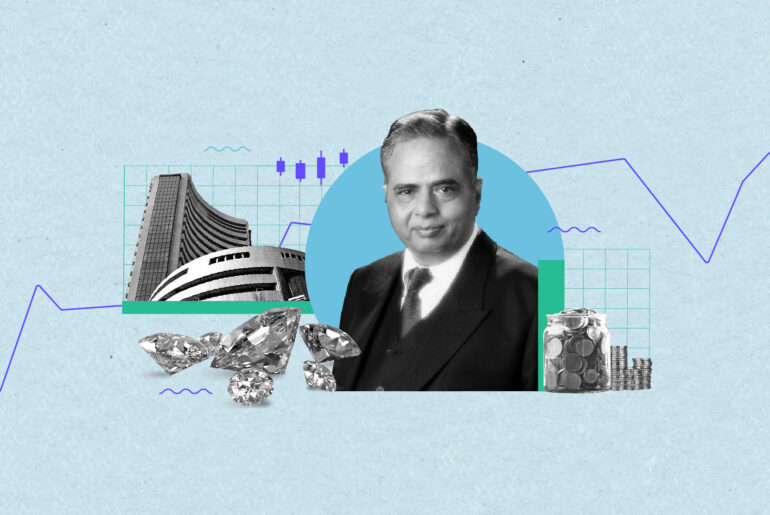Last Updated on Jun 14, 2022 by Anjali Chourasiya
Do you constantly come across the term ‘Sensex’ and wonder what it actually means? If yes, you are at the right place. We are going to take you through what Sensex is, its eligibility criteria, and the list of 30 Sensex companies. So, let’s dive right into it.
Table of Contents
What is Sensex?
The term Sensex refers to the benchmark index of the Bombay Stock Exchange (BSE) in India. As a market index tracks the performance of a certain group of stocks, bonds, or other investments, Sensex tracks the movements of 30 Indian companies listed on BSE. They are the top blue-chip stocks available in the country. It is also called BSE Sensex or Sensex 30.
Sensex stands for ‘Stock Exchange Sensitive Index’, a term coined by stock market expert Deepak Mohini. Established in 1986, it is the oldest stock index in India and is operated by Standard & Poor’s (S&P). The Sensex is considered India’s most tracked index because it represents 30 of the country’s largest and most well-capitalised stocks listed on the BSE.
Sectors represented in Sensex
The Sensex comprises of top 30 companies which broadly covers the following sectors:
- Integrated Oil and Gas
- Banks
- IT Consulting and Software
- Housing Finance
- Cigarettes, Tobacco Products
- Construction and Engineering
- Personal Products
- Telecom Services
- Finance (including NBFCs)
- Furniture, Furnishing, Paints
- Cement and Cement Products
- Cars and Utility Vehicles
- Holding Companies
- Pharmaceuticals
- Packaged Foods
- Electric Utilities
- Iron and Steel/Intermediate Products
- Other Apparels and Accessories
List of Sensex companies
| S. No. | Name | Sector | Market Capitalization (in cr.) | Weight |
| 1 | Reliance Industries | Integrated Oil & Gas | 17,73,889.78 | 14.69% |
| 2 | HDFC Bank | Banks | 7,33,156.15 | 9.41% |
| 3 | Infosys | IT Consulting & Software | 6,12,303.26 | 8.65% |
| 4 | ICICI Bank | Banks | 4,93,251.86 | 8.01% |
| 5 | HDFC | Housing Finance | 3,99,512.68 | 6.49% |
| 6 | TCS | IT Consulting & Software | 12,05,254.93 | 5.48% |
| 7 | Kotak Mahindra Bank | Banks | 3,63,034.33 | 4.36% |
| 8 | ITC | Cigarettes,Tobacco Products | 3,44,989.55 | 3.98% |
| 9 | Hindustan Unilever | Personal Products | 5,46,397.45 | 3.37% |
| 10 | Larsen & Toubro | Construction & Engineering | 2,26,216.71 | 3.16% |
| 11 | Axis Bank | Banks | 2,06,734.33 | 2.89% |
| 12 | State Bank of India | Banks | 4,12,763.28 | 2.88% |
| 13 | Bharti Airtel | Telecom Services | 3,77,686.72 | 2.64% |
| 14 | Bajaj Finance | Holding Companies | 3,49,723.17 | 2.50% |
| 15 | Asian Paints | Furniture, Furnishing, Paints | 2,98,267.35 | 2.28% |
| 16 | HCL Technologies | IT Consulting & Software | 2,79,127.59 | 1.77% |
| 17 | Maruti Suzuki | Cars & Utility Vehicles | 2,29,194.18 | 1.64% |
| 18 | Sun Pharma | Pharmaceuticals | 2,19,653.72 | 1.61% |
| 19 | Tata Steel | Iron & Steel/Interm. Products | 1,43,014.29 | 1.53% |
| 20 | Titan Company | Other Apparels & Accessories | 1,89,764.29 | 1.45% |
| 21 | Mahindra & Mahindra | Cars & Utility Vehicles | 1,12,459.20 | 1.41% |
| 22 | Power Grid | Electric Utilities | 1,59,772.75 | 1.27% |
| 23 | Bajaj Finserv | Finance (including NBFCs) | 1,99,910.84 | 1.23% |
| 24 | NTPC | Electric Utilities | 1,44,965.16 | 1.15% |
| 25 | UltraTech Cement | Cement & Cement Products | 1,76,764.71 | 1.15% |
| 26 | Tech Mahindra | IT Consulting & Software | 1,09,996.64 | 1.14% |
| 27 | Wipro | IT Consulting & Software | 2,51,960.75 | 1.10% |
| 28 | Nestle | Packaged Foods | 1,62,594.02 | 0.98% |
| 29 | IndusInd Bank | Banks | 69,450.29 | 0.95% |
| 30 | Dr Reddy’s Labs | Pharmaceuticals | 70,665.96 | 0.84% |
Eligibility criteria for Sensex
To list any company on Sensex, the following eligibility criteria has to be met:
- The company should be listed in India on BSE.
- It should be a large- to mega-cap company.
- There should be relative liquidity in the stocks.
- Revenue of the company should be generated from core activities.
- The companies should be balancing the sector in line with the Indian equity market.
How is the Sensex calculated?
BSE Sensex uses Free Float Market Capitalisation method to calculate the value of the index. The first step in this methodology is to determine the free float market capital of 30 companies that form the index. The formula to calculate is:
Free Float Market Capitalisation = Market Capitalisation x Free Float Factor
Where,
Market Capitalisation = the market value of the company
Market Capitalisation = Share price per share x number of shares issued by the company
Free Float Factor = percentage of total shares a company issues that are freely available to the public to trade. This can also mean the total outstanding shares of the company. It excludes all shares that are held by the promoters, the government, group companies, etc.
After determining the Free Float Market Capitalisation of the companies, the value of Sensex is calculated using the formula:
Sensex = (Total Free Float Market Capitalisation / Base Market Capitalisation) x Base index value
The base period (year) for Base Market Capitalisation is 1978-79. The base index value for Sensex is 100.
Free Float Market Capitalisation method is similar to the market capitalisation weighting method except for the use of free float market shares.
To sum up
There are thousands of companies listed on the Indian stock market. For any investor, it becomes difficult to check every available stock before investing. Therefore, market indices are crucial as they represent the entire market. The Sensex is the benchmark index of the Bombay Stock Exchange. It has 30 of the largest and most actively traded stocks on the BSE. The index is float-adjusted and market capitalisation-weighted, reflecting the movements in the Indian stock market.
FAQs
1. What is Sensex in simple words?
2. How many companies do Sensex have?
3. What are blue-chip companies?
4. Is Sensex and Nifty the same?
- Best Solar Energy Stocks in India – 2024 - Apr 2, 2024
- 10 Highest Dividend Paying Stocks in Nifty 50 - Apr 2, 2024
- Top 10 Cement Stocks in India – 2024 - Mar 4, 2024







